Richard Henry Pratt provides an estimate for the fiscal year 1898 at the request of the Office of Indian Affairs.
Student Living Conditions
Housing, etc., not food (use food and dining for that).
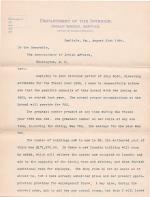
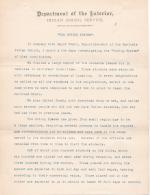
A. O. Wright, Supervisor of Indian Schools, provides a report on the Carlisle Indian School focusing on the outing program. Wright provides details of the school as he found it as well as provides recommendations for improvement.
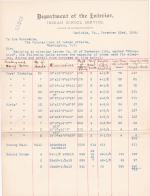
Richard Henry Pratt provides a list of the rooms and dimensions for the sleeping quarters, dining room, and school rooms at the Carlisle Indian School. Pratt focuses on the dormitories due to the excess space as compared to Office regulations.
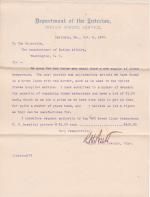
Richard Henry Pratt requests authority to purchase 400 linen bedspreads as used by the United States hospital service.
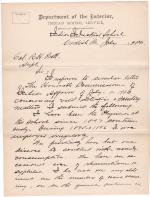
S. L. Diven provides a report in compliance with Office of Indian Affairs circular #99. Diven details his connection with the Carlisle Indian School and the most common ailments he has had to treat including consumption and other respiratory diseases. Diven also makes recommendations on the treatment of teeth and eyes as well as improvements to…
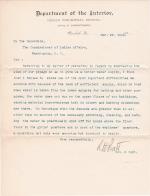
Richard Henry Pratt follows up on his previous letter stating an additional need for increasing the size of pipes which deliver water to the Carlisle Indian School.
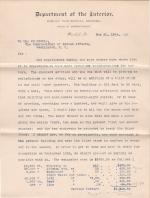
Richard Henry Pratt requests authority to build a third story to the small boys dormitory in order to alleviate crowding during the winter.
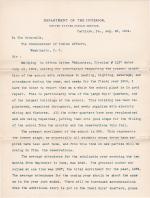
William A. Mercer provides a report to the Office of Indian Affairs on the state of the Carlisle Indian School during the previous fiscal year. Mercer focuses on the physical plant of the school including the sewage and electric plants and proposes building additional rooms to split the small and large girls. He ends by requesting the…
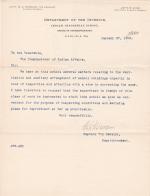
William A. Mercer requests an inspection be made of school buildings at the Carlisle Indian School and suggestions be made for improving sanitary conditions.
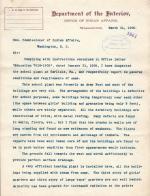
These materials include correspondence and a report regarding construction, buildings, and grounds at the Carlisle Indian School, performed in 1905 by John Charles. Medical Supervisor Dr. Joseph A. Murphy requested the report in 1908, and returned it to the Bureau office in 1909.
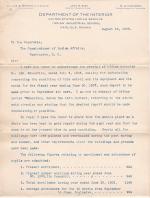
William A. Mercer provides an estimate for the 1907 fiscal year in addition to providing an overview of the physical plant and the need for various buildings.
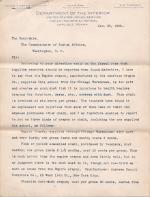
William A. Mercer informs the Office of Indian Affairs that the Empire crayon supplied by the Chicago Warehouse is defective as it is too soft and creates too much dust. Mercer recommends the Steatite Anti-dust crayon manufactured by the Andrews School Furniture Co. as it is nearly dustless and is much easier to wipe away as the preferred chalk…
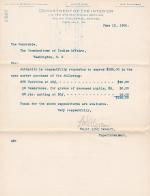
William A. Mercer requests authority to purchase neckties, headstones, and matting.
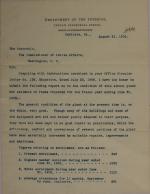
William A. Mercer provides an overview of the physical plant of the Carlisle Indian School for the 1906 fiscal year and provides an estimate for the 1908 fiscal year. Mercer further makes suggestions on ways to improve the physical plant.
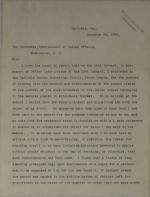
W. S. Olive, Special U.S. Indian Agent, reports on the personal student financial accounts at the Carlisle Indian School. Olive makes a number of recommendations to prevent further fraud.
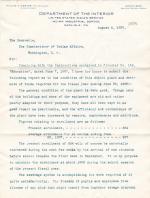
William A. Mercer provides an update on the conditions of the physical plant of the Carlisle Indian School and provides an estimate for the 1909 fiscal year appropriation.
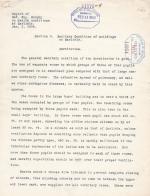
Medical Supervisor Joseph A. Murphy writes a report entitled "Sanitary Condition of Buildings at Carlisle." He focuses on dormitories, the dairy barn, and the guard house. He provides recommendations to better improve the cleanliness of the dormitories and the guardhouse.
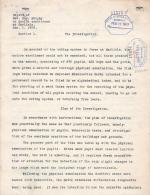
These materials include an excerpt of Dr. Joseph A. Murphy's health inspection report on the Carlisle Indian School from February 1909, as well as a letter from Chief Clerk of the Bureau of Indian Affairs Frank M. Conser to Dr. Murphy asking when they can expect to receive the full report. Included in the excerpt is a discussion of tuberculosis…
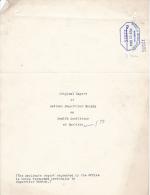
These materials include a health report of the Carlisle Indian School, performed by Medical Supervisor Dr. Joseph A. Murphy in December 1908. Murphy's report included a study of the school's physical plant, students' health conditions including tuberculosis and trachoma, and recommendations. The report includes statements on the health of…
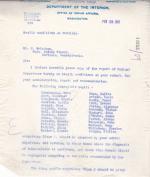
This material includes a forwarded press copy report detailing the findings of Medical Supervisor Joseph A. Murphy's investigation of tuberculosis at the Carlisle Indian School in 1909. This report includes a list of pupils diagnosed with tuberculosis and recommended to be sent home, as well as recommendations for changes to the dormitories.…
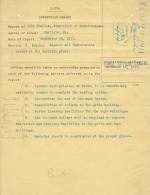
Supervisor of Construction John Charles provides a report on the heating system and buildings at the Carlisle Indian School. He writes about completing the heating and vacuum system, the newly renovated guardhouse, building a workshop for the engineer, building new bathrooms for the dormitories, installing manholes for the sewer system, and he…
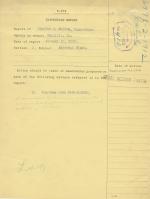
Supervisor of the Fifth District Charles F. Peirce provides an Inspection Report about the Carlisle Indian School. Peirce states that the dormitories need new floors, that the partially installed vacuum system makes it impossible to properly heat the buildings, and that the toilet and lavatory facilities are the "poorest" he's ever seen.…
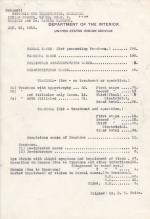
This document contains reports and correspondence about eye examinations of Carlisle's students, performed in 1912. Included are statistics and lists of students in need of specific eye treatments, as well as recommendations on preventing further eye infections from spreading through the school.
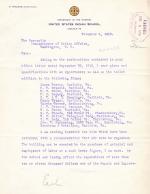
Superintendent Moses Friedman outlines the desperate need for a new lavatory for the large boys, as the current one is outdated and unsanitary. He requests to reject all bids from contractors in order to purchase materials and have the school build its own lavatory addition to the large boys' quarters. Commissioner of Indian Affairs F. H.…
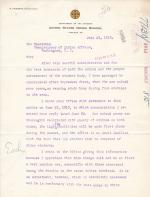
Carlisle Indian School Superintendent Moses Friedman requests to reinstate an evening study hour two nights a week in which students will do homework in the academic classrooms. In years past, it was four nights a week in the classroom, but last year it changed to four nights a week in the dormitories, which Friedman doesn't find to be as…
